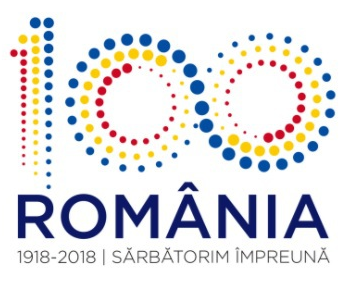Articol devastator despre vaccinul HPV – ziarul American Infowars – „RAPORT: VACCINUL HPV LEGAT DE CREȘTEREA CAZURILOR DE CANCER CERVICAL.
Poate în al 12-lea politicienii vor înțelege ce-nseamnă vaccinarea cu forța ca pe vite, o lege care încalcă cel mai fundamental drept al omului acela de a dispune de el însuși. Se pare că acest drept a fost trecut degeaba în Constituția țării noastre ca și cel care spune că „Pe teritoriul României nu pot fi strămutate populații străini” …Ultimul articol a fost încălcate cu bună știință, primul va fi încălcat în curând în apluazele progresiștilor totalitariști de pretudindeni (E plin de strămutați pe Bulevardul Unirii spre Alba Iulia, pe la Obor și prin alte zone din Bucureșlti, mergeți seara să-i vedeți, așa cum e la fel de plin prin Timișoara și rpin alte locuri din țară.)
Decât să mai repete la nesfârșit Mantra Progresistă cum că „nici un vaccin din lume nu a creat niciodată probleme” (se-aude d-le Arafat? Poate citiți totuși linkurile din acest articol către studiile și statisticile pe această temă…), Ministerul Sănătății din România ar trebui să treacă rapid și să facă niște studii statistice serioase în România plus să studieze la greu toate studiile statistice și științifice care apar în lume pe acest subiect. Ăsta-i rolul unui Minister care se respectă: să protejeze populația, să prezinte studii și statistici exacte, nu să latre lozinci la televizor pe banii noștri.
Nimeni nu e nebun să nu-și vaccineze copiii dacă acest ajută ajută și dacă riscurile tind spre zero, așa cum nimeni nu e nebun să-și vaccineze copiii atunci când se sesizează probleme majore cu unele vaccinuri în diferite colțuri ale mapamondului, în timp ce în alte locuri problemele sunt ținute sub preș
Nici până în ziua de azi Ministerul Sănătății nu a găsit de cuvință să publice un raport final legat de CAUZA care a dus la moartea și al îmbolnăvirile bebelușilor de SHU din Argeș și din alte județe ale țării… S-au spus minciuni peste minciuni, într-o propagandă asurzitoate a televizunilor și ziarelor Binomiste, cu manipularea cu „eColi”, care inițial era din portocale (Digi24, Realitate etc), apoi din supiță, apoi din carnea de pui și apoi din brânza de la Lactate Brădet, în timp ce cel puțin una din mame a declarat că bebelușul ei mânca doar lapte praf, iar în fișa medicală de la autopsia bebelușilor morți nu apărea deloc că eColi-ucigașa ar fi fost identificată în vreun fel (în timp ce altor bebeluși nici măcar nu li s-a făcut autopsia deși au murit în spital).

Cert este, că exact că în aceeași perioadă s-a adus în România un vaccin din Kazahstan neomologat în UE, care se afla în faza de teste…și de care spre cinstea noastră, noi am scris în Premieră în România (după ce ni s-a semnalat acest lucru de către un cititor de-al nostru). A fost o Simplă Coincidență? Poate da sau Poate nu. Căci atâta timp cât Ministerul Sănătății nu a găsit de cuviință să informeze publicul despre cauza îmbolnăvirilor, e posibil orice, nu? Ca să nu mai spunem de propaganda asuzitor de mincinoasă și la manipulările și minciunile la care am asistat în acele zile.
Ziarul American Infowars – „RAPORT: VACCINUL HPV LEGAT DE CREȘTEREA CAZURILOR DE CANCER CERVICAL. Fetițele primesc acest vaccin încă de la vârsta de 12 ani” (American Infowars – „REPORT: HPV VACCINE LINKED TO SPIKE IN CERVICAL CANCER Girls as young as 12 receive HPV vaccine”)
Atunci când SUA a introdus vaccinul împotriva papilomavirusului uman (HPV) în 2006, ratele de cancer de col uterin au scăzut constant timp de mai multe decenii, în mare parte datorită screening-ului reușit și rutinizat al cancerului de col uterin.
O tendință similară se desfășura și în Europa, inclusiv în Scandinavia. În această regiune, Suedia s-a remarcat ca având cele mai scăzute niveluri de cancer de col uterin.
Acum, Suedia pare gata să piardă această distincție. Centrul Suediei pentru Prevenirea Cancerului de col uterin a raportat în 2017 că incidența cancerului de col uterin invaziv și-a inversat cursul și crește în aproape toate regiunile țării.
Creșterea a fost deosebit de puternică (20%) în perioada de doi ani din 2013 până în 2015. Nici Centrul, și nici autoritățile suedeze din domeniul sănătății, și nici mass-media (n.r. dominată de progresiști), nu oferă nicio explicație pentru schimbarea tendințelor cancerului de col uterin.
Un cercetător suedez independent a decis să se uite mai atent.
Pe 30 Aprilie, 2018, el a publicat studiul:
Creșterea incidențelor de cancer cervical în Suedia : posibila legătură cu Vaccinarea HPV
Creșterea incidențelor de cancer cervical în Suedia : posibila legătură cu Vaccinarea HPV
Lars Andersson
Published online: April 30, 2018
Centrul de Prevenire a Cancerului de col uterin din Suedia a observat în raportul său anual o creștere substanțială a incidenței cancerului de col uterin invaziv, în special în cei doi ani, 2014 și 2015. Am subgrupat datele în funcție de vârstă, folosind aceeași bază de date statistice al Consiliului Național al Sănătății și Protecției Sociale, utilizat de către autorii raportului menționat mai sus. Creșterea incidenței cancerului de col uterin s-a dovedit a fi cea mai proeminentă în rândul femeilor cu vârsta cuprinsă între 20 și 49 de ani, în timp ce femeile cu vârsta peste 50 de ani nu au înregistrat o creștere aparentă.
FDA a observat în studiile clinice la care s-a referit, la aprobarea introducerii pe piață (a vaccinulii HPV), că femeilor expuse anterior vaccinării la virusul papilloma uman (HPV) au avut o creștere a modificărilor celulelor premaligne (n.r. pre-cancerigene), în comparație cu controalele placebo.
Am discutat în acets articol, despre posibilitatea ca vaccinarea împotriva HPV să poată juca un rol în creșterea incidenței cancerului de col uterin făcând în loc să prevină boala de cancer de col uterin la femeile expuse anterior la HPV.
Există o relație de timp între începerea vaccinării (în Suedia) și creșterea incidenței cancerului de col uterin.
Vaccinurile HPV au fost aprobate în 2006 și respectiv 2007, iar cele mai multe fete au început să fie vaccinate în perioada 2012-2013.
Increased incidence of cervical cancer in Sweden: Possible link with HPV vaccination
Lars Andersson
Published online: April 30, 2018
Abstract
The Centre for Cervical Cancer Prevention in Sweden has noted in its annual report a substantial increase in the incidence of invasive cervical cancer, especially during the two years 2014 and 2015. I have sub-grouped the data according to age, using the same statistical database of the National Board of Health and Welfare as used by the authors of the above-mentioned report. The increase in the incidence of cervical cancer was shown to be most prominent among women 20–49 years of age while no apparent increase was observed among women above 50. The FDA has noted in the clinical trials referred to it for marketing approval that women exposed to the human papilloma virus (HPV) prior to vaccination had an increase in premalignant cell changes compared with placebo controls. I discuss the possibility that HPV vaccination could play a role in the increase in the incidence of cervical cancer by causing instead of preventing cervical cancer disease in women previously exposed to HPV. A time relationship exists between the start of vaccination and the increase in the incidence of cervical cancer. The HPV vaccines were approved in 2006 and 2007, respectively and most young girls started to be vaccinated during 2012–2013.
(Notă: articolul complet îl puteți citi momentan în engleză la sfârșitul acestui articol)
Cercetătorul a publicat acest studiu în „Jurnalul Indian de etică medicală”, unde a arătat că vaccinul HPV poate provoca cancerul, mai degrabă decât să prevină cancerul de col uterin la unele femei.
Această afirmație amenință în mod direct status-quo-ul comercializării, vaccinurilor HPV, prezentate ca fiind universal sigure și eficiente.
Din acest motiv, autorul a ales să publice sub un pseudonim – cu convingerea că „utilizarea numelui său real ar fi invitat la repercusiuni personale de la cei care s-au opus oricărei interogări asupra vaccinurilor” – dar nu a informat revista că numele publicat și afilierile au fost fictive.
O săptămână mai târziu, această omisiune a devenit cunoscută editorilor revistei, care au fost afectați și au publicat imediat o corectură.
Cu toate acestea, editorii au făcut în continuare, un pas neobișnuit și curajos de a menține articolul pe site-ul jurnalului, deoarece „problemele ridicate de acest articol sunt importante și discuțiile despre acesta sunt în interesul publicului”.
Femeile Tinere și vaccinul HPV
Ca o primă etapă în evaluarea acestei creșteri neașteptate a incidenței cancerului de col uterin în Suedia, strategia analitică a cercetătorului anonim a fost să analizeze, pe grupe de vârstă, aceleași date naționale care au informat despre acest lucru în raportul din 2017.
Atunci cand cercetatorul a comparat ratele de cancer de col uterin la femeile tinere (20-49 ani) cu ratele de cancer de col uterin pentru femeile mai în vârsta (peste 50 de ani), el a constatat ca vârsta a făcut o mare diferență: creșterea incidenței cancerului de col uterin s-a dovedit a fi proeminentă în rândul femeilor tinere cu vârsta cuprinsă între 20 și 49 de ani, în timp ce femeile cu vârsta de peste 50 de ani nu au înregistrat o creștere aparentă.
Când a comparat schimbările în incidență a cancerului de col uterin invaziv din 2006 față de 2015, a constatat din nou că majoritatea cazurile de cancer apărute au afectat în cea mai mare parte femeile mai tinere – și mai ales femeile ce aveau vârsta de douăzeci de ani.
De ce ar trebui să se întâmple acest lucru, când ni se spune că cancerul de col uterin indus de HPV „necesită adesea ani, chiar și decenii, să se dezvolte după ce o persoană primește HPV”?
Ca răspuns, cercetătorul suedez arată că linia temporară de încetinire nu se aplică tuturor femeilor care suferă de cancer de col uterin.
De fapt, debutul rapid caracterizeaza aproximativ 25% din cazuri, cu „un interval scurt de mai putin de 3 ani de la … negative pana la descoperirea cancerului”.
Aceasta înseamnaă ca o crestere a incidentei cancerului de col uterin ar putea fi foarte bine discernable in perioada scurta din timpul observat în Suedia:
Țara a aprobat vaccinul Gardasil în 2006.
Până în 2010, aproximativ patru cincimi (80%) dintre fetele în vârstă de 12 ani au primit vaccinul și aproximativ trei cincimi (59%) fete de 13-18 ani au fost vaccinate printr-o „înțelegere” asupra programului de vaccinare.
Până în 2012-2013, „cele mai multe fete tinere au fost vaccinate”.
Până în 2015, cele mai vechi fete din grupul de „capturi” (vârste cuprinse între 15-18 ani) au ajuns la vârsta de 20 de ani și astfel au fost „bine plasate în interiorul” cohortei de 20-29 de ani care a prezentat cea mai mare creștere a incidenței cancerului de col uterin .
Vaccinarea cu Gardasil în acest subgrup a produs un nivel mai ridicat de schimbări premaligne de celule decât a făcut-o starea „placebo” (normală).
Boala și reactivarea virală
Cercetătorul suedez oferă două explicații suplimentare (care pot eventual și suprapuse) pentru creșterea valorii cancerului de col uterin invaziv la femeile mai tinere.
Mai întâi, cercetătorul explică faptul că șapte din zece cazuri de cancer de col uterin sunt legate doar de două tulpini de HPV „țintă” (HPV 16 și 18), și că vaccinul HVP este inutil – și chiar dăunător – persoanelor care au fost expuse acestor tulpini înainte de vaccinare.
De fapt, el arătat ca US Food and Drug Administration (FDA) a recunoscut aceasta problema in revizuirea clinica a Gardasil-ului făcută în 2006, care a descris eufemistic potentialul de imbunatatire a bolii la persoanele vaccinate cu Gardasil care au fost expuse la HPV 16 / 18 înainte de vaccinare în comparație cu persoanele fără expunere la HPV 16/18 (p. 359). vaccinarea cu Gardasil în acest subgrup a produs un nivel mai ridicat de schimbări premaligne de celule decât a făcut „placebo-ul” (nevaccinarea).
Pentru a explica efectele subgrupurilor diferențiate, cercetătorul atrage atenția asupra fenomenului de reactivarea virală indusă de vaccin, prin care un vaccin declanșează/activează un virus latent care va manifesta „simptome severe după reactivare”.
Cu peste 200 de tulpini cunoscute de papilomavirus uman omniprezent (și peste o duzină care sunt asociate cu cancerul de col uterin), este pe deplin plauzibil ca vaccinul HPV să reactiveze tulpinile HPV care provoacă cancer (atât „țintă”, cât și „non-țintă”) la femeile tinere infectate anterior cu HPV. Cercetătorul suedez încheie:
Incidenta crescuta in randul femeilor tinere, posibilitatea de reactivare a virusului dupa vaccinare, cresterea schimbarilor de celule premaligne aratat de FDA pentru femeile care au fost deja expuse la tipuri de oncogene [inducerea tumorii] HPV si relatia de timp intre inceputul vaccinarii si cresterea cancerului de col uterin in Suedia ar putea sprijini [punctul de vedere] ca vaccinul HPV cauzează o crestere a cancerului de col uterin invaziv in loc de a preveni aceasta in randul femeilor deja infectate.
Un record îngrozitor
De la începuturile lor, cele două vaccinuri HPV (Gardasil de Merck și, în afara S.U.A., GlaxoSmithKline’s Cervarix) au fost comercializate agresiv, beneficiile lor potențiale fiind supralicitate și numeroasele lor riscuri deghizate, în special prin utilizarea unei referințe de placebo inadecvată.
Practic singuri cercetătorii independenți au ajuns să critice dovezile zgârcite ale aparatului de reglementare. Articole recent publicate în British Medical Journal (BMJ), au adus câteva cifre stricte care ilustrează înregistrările îngrozitoare ale vaccinului:
O rată a evenimentelor adverse grave de 1 la 15 (7%)
și o rată a mortalității printre cei vaccinați (de 14 la 10.000) care depășește cu mult riscul de a muri de cancerul de col uterin (care este de doar 0,23 la 10.000)
(cf. scrisorii BMJ, din Mai 2018).
I do not know on what basis these vaccines are said to be safe [1]. I quote from the review [2]:
„The risk of serious adverse events is similar between control and HPV vaccines in women of all ages (669 versus 656/10,000, RR 0.98 (0.92 to 1.05), high certainty). Mortality was 11/10,000 in control groups compared with 14/10,000 (9 to 22) with HPV vaccine (RR 1.29 [0.85 to 1.98]; low certainty). The number of deaths was low overall but there is a higher number of deaths in older women. No pattern in the cause or timing of death has been established.”
However, controls are not placebo but other vaccines, so we apparently have serious adverse events in 1 in 15 cases, 11 deaths per 10,000 among controls and excess of 3 deaths, 14 per 10,000 for those receiving HPV vaccines.
Is there any point to this intervention?
[1] Nigel Hawkes, ‘HPV vaccines are effective and safe and work best in young women, review finds’, BMJ 2018; 361 doi: https://doi.org/10.1136 /bmj.k2059 (Published 09 May 2018)
[2] Marc Arbyn, Lan Xu, Cindy Simoens, Pierre PL Martin-Hirsch, ‘Prophylactic vaccination against human papillomaviruses to prevent cervical cancer and its precursors’, http://cochranelibrary-wiley.com/doi /10.1002/14651858.CD009069.pub3/full
Competing interests: No competing interests
Rapoarte la baza de date privind reactiile adverse globale ale Organizatiei Mondiale a Sanatatii – au estimat in mod conservativ ca reprezinta 10% din reactiile reale – de peste 305.000 de reactii adverse in cazul in care se crede ca vaccinul HPV a fost cauza, inclusiv 445 de decese ) și peste 1.000 de tumori canceroase (inclusiv 168 de cancere de col uterin), printre alte reacții grave
(cf. scrisorii BMJ, din Decembrie 2017).
For ‘HPV vaccine’ there are now 305,014 adverse drug reactions in 81,263 reports. These include 445 deaths (including 23 sudden deaths), 1,052 neoplasms (including 168 cervical cancers and 25 carcinoma in situ), 460 cases of PoTS and 144 cases of CRPS. They even acknowledge that only c.10% of adverse reactions are reported. We are told that these reports do not prove causation but they have been reported as spontaneous reports where the vaccine is believed to have been the cause. When are health officials responsible for drug safety going to stop ignoring these safety signals? Whilst these situations exist they will never convince the general public that all vaccines are safe and effective and need to be mandated to protect them.
Chiar si in tarile in care cazurile de cancer de col uterin este mult mai mare, cercetatorii sunt atenți la preformanțele vaccinului HPV si ajung la concluzia ca metodele dovedite si eficiente ca și cost, cum e screeningul cancerului de col uterin, rămân cele mai fezabile strategii de prevenire in țările cu resurse scăzute.
Un grup de cercetători indieni susțin într-un studiu științific că, dintr-o perspectivă individuală, „o fetiță sănătoasa de 16 ani are un risc imediat zero de a muri de cancerul de col uterin, dar se confrunta cu un risc mic, dar real, de deces sau de handicap severa de la un vaccin care inca nu va preveni un singur caz de cancer de col uterin”.
Din perspectivă programatică, ei declară că: „nu există date în literatură care să sugereze că vaccinarea poate înlocui screeningul cancerului de col uterin”. Și că „Pentru orice acoperire a populației, screening-ul cervical va detecta întotdeauna mai multe tipuri de cancer decât poate preveni vaccinarea. Analizele eficienței de cost au arătat că screening-ul cervical este mai rentabil decât fie vaccinarea în monoterapie, fie vaccinarea cu screening-ul.”
Revenind la Suedia, cercetătorii de la Centrul de Monitorizare din Uppsala au descris cât de usor este pentru riscurile vaccinării de a „scăpa de detectia epidemiologică”. Implicatiile, conform acestui grup, sunt că „rapoartele de caz și seriile de cazuri nu mai pot fi aruncate pur si simplu ca „anecdote” sau „coincidențe”, iar contribuția lor la baza de date nu ar trebui să fie „tinuta” de rezultatele unui studiu epidemiologic. Concluzia este că procesul de aprobare al vaccinului corupt nu ar trebui să permită să fie sacrificate femeile tinere pe altarul profiturile din industrie.
Nota Redacției: Fluierul.ro tocmai a publicat traducerea unui alt articol științific apărut în Revista Nature în 2016 despre Legătura dintre vaccinul HPV și Distrugerea Creierului, testată pe șoareci. Iată cum se leagă lucrurile între ele.
VACCINAREA HPV DISTRUGE CREIERUL. STUDIU ȘTIINȚIFIC PUBLICAT ÎN REVISTA „NATURE”:
„Distrugerea hipotalamică murină cu apoptoză de celule vasculare după administrarea combinată a vaccinului împotriva papilomavirusului uman și a toxinei pertussis” – 2016
Din studiu: „În concluzie, studiul nostru a arătat că expunerea CNS la vaccinul HPV poate induce degenerarea neuronală și poate duce la disfuncții motorii la șoareci C57 / BL6, care sunt similare cu simptomele clinice asociate cu vaccinarea HPV 9 , 10. Mai mult, co-injectarea de Ptx induce deteriorări hipotalamice asociate cu disfuncții motorii la o frecvență mai mare”.
Figura 4: Detectarea apoptozei prin TUNEL în creierul șoarecelui. Secțiunile din creierele șoarecilor vaccinați și cu Ptx au fost colorate cu anti-CD31, NG2 și GFAP. Scară de bare, 20 μm. Celulele apoptotice sunt indicate prin săgeți. Scară bar, 20 μm.
 Puteți citi întreg articolul: AICI
Puteți citi întreg articolul: AICI
Nota Bene (Luați Aminte)
După doi ani de la Publicare, articolul din revista Nature: „Distrugerea hipotalamică murină cu apoptoză de celule vasculare după administrarea combinată a vaccinului împotriva papilomavirusului uman și a toxinei pertussis””, publicat în 2016, a fost retras, fără ca cineva să vină cu un alt studiu care să arate că șoarecii nu pățesc ceea ce acest studiu a arătat în 2016, că pățesc, în urma vaccinării HPV.
Acest studiu făcut de o echipă de cercetători japonezi „a rezistat”, PUBLICAT, doar 2 ani. După care a fost Cenzurat (prin trecerea sa în derizoriu).
În același timp, medicul suedez care a publicat statisticile îngrozitoare în studiul: „Creșterea incidențelor de cancer cervical în Suedia : posibila legătură cu Vaccinarea HPV – pe aprilie 30, 2018” …le-a publicat ca ANONIM, de frică să nu fie dat afară de la serviciu pe viață și să i se retragă licența de medic, așa cum s-a întâmplat deja în multe alte cazuri. Mai mult, suedezul își publică studiul în INDIA, deoarece nimeni din Europa și din America nu i le-ar fi publicat.
Asta ca să vedeți CENZURA și TOTALITARISMUL PROGRESIST care domnesc deja în acest domeniul al vaccinărilor în care OAMENII TREBUIE VACCINAȚI CU FORȚA CA VITELE, împotriva propriei lor voințe și a dreptului lor sacru de a dispune de ei înșiși drept garantat de Constituția Romnâniei, ca și de Constituțiile oricărui stat democratic
Văzând insistența fanatică prin care progresiștii și afiliații lor încearcă impunerea VACCINĂRII CU FORȚA a oamenilor, vrând, nevrând, trebuie să ne întrebăm: Care e scopul acestui fanatism și a acestei insistențe de a-i VACCINA PE TOȚI CU FORȚA ca pe vite?
Infowars
However, the editors also took the unusual and courageous step of keeping the article on the journal’s website because “the issues raised by it are important and discussion on it is in the public interest.”
Young women and the HPV vaccine
As a first step in assessing the unexpected uptick in Sweden’s cervical cancer incidence, the anonymous researcher’s simple analytic strategy was to parse, by age group, the same national data that informed the 2017 report.
When the researcher compared cervical cancer rates in younger women (ages 20-49) to rates for older women (over age 50), he found that age made a big difference: “The increase in the incidence of cervical cancer was shown to be most prominent among women 20–49 years of age while no apparent increase was observed among women above 50” [emphasis added].
When he compared changes in invasive cervical cancer incidence in 2006 versus 2015, he again found that the increase mostly affected younger women—and especially women in their twenties. Why should this be the case, when we are told that HPV-induced cervical cancer “often takes years, even decades, to develop after a person gets HPV”?
As one answer, the Swedish researcher points out that the slow-simmer timeline does not apply to all women who get cervical cancer. In fact, rapid onset characterizes roughly 25% of cases, with “a short interval of less than 3 years from negative…screenings to finding of cancer.” This means that an increase in cervical cancer incidence could very well be discernable within the short period of time observed in Sweden:
- The country approved the Gardasil vaccine in 2006.
- By 2010, about four-fifths (80%) of 12-year-old girls were given the vaccine, and about three-fifths (59%) of 13–18-year-old girls were vaccinated through a “catch-up” program.
- By 2012-2013, “most young girls were vaccinated.”
- By 2015, the oldest girls in the “catch-up” group (ages 15-18) had reached their early twenties and thus were “well within” the 20-29-year-old cohort that displayed the greatest increase in cervical cancer incidence.
Disease enhancement and viral reactivation
The Swedish researcher offers two additional (and potentially overlapping) explanations for the surge in invasive cervical cancer in younger women.
First, he explains that seven in ten cases of cervical cancer are linked to just two “target” HPV strains (HPV 16 and 18), and the vaccine is useless—and even damaging—to individuals who have been exposed to those strains prior to vaccination.
In fact, he shows that the U.S. Food and Drug Administration (FDA) recognized this problem in its clinical review of Gardasil in 2006, which euphemistically described the “potential for disease enhancement” in Gardasil-vaccinated individuals who had been exposed to HPV 16/18 before vaccination compared to individuals with no HPV 16/18 exposure (p. 359). Gardasil vaccination in this subgroup produced “a higher level of premalignant cell changes than did placebo.”
To account for the differential subgroup effects, the researcher points to the phenomenon (well recognized in the peer-reviewed literature) of vaccine-induced viral “reactivation,” whereby a vaccine triggers a latent virus to manifest “severe reactivation symptoms.”
With over 200 known strains of the ubiquitous human papillomavirus (and over a dozen that are associated with cervical cancer), it is fully plausible that the HPV vaccine could reactivate cancer-causing HPV strains (both “target” and “non-target”) in previously HPV-infected young women. The Swedish researcher concludes:
“The increased incidence among young females, the possibility of virus reactivation after vaccination, the increase in premalignant cell changes shown by the FDA for women who were already exposed to oncogenic [tumor-inducing] HPV types and the time relationship between the start of vaccination and the increase in cervical cancer in Sweden could support [the] view” that the HPV vaccine is “caus[ing] an increase in invasive cervical cancer instead of preventing it among already infected females.”
An appalling record
From their inception, the two HPV vaccines (Merck’s Gardasil and, outside the U.S., GlaxoSmithKline’s Cervarix) have been aggressively marketed, with their potential benefits oversold and their many risks disguised, particularly through the use of inappropriate placebos. It has been left to independent researchers to critique the regulatory apparatus’s whitewashed evidence. Recent letters published in the British Medical Journal (BMJ) have brought forward some stark numbers that illustrate the vaccine’s appalling record:
- A serious adverse event rate of 1 in 15 (7%) and a death rate among the vaccinated (14 per 10,000) that far exceeds the risk of dying from cervical cancer (.23 per 10,000) (BMJletter, May 2018).
- Reports to the World Health Organization’s global adverse drug reactions database—conservatively estimated to represent 10% of actual reactions—of over 305,000 adverse reactions where the HPV vaccine “is believed to have been the cause,” including 445 deaths (23 of which were sudden) and over 1,000 cancerous tumors (including 168 cervical cancers), among other serious reactions (BMJletter, December 2017).
Even in countries where the burden of cervical cancer is far higher, researchers are eyeing the HPV vaccine’s dismal performance and are reaching the conclusion that “proven and cost-effective methods” of cervical cancer screening “remain the most feasible prevention strategies in low resource countries.”
One group of Indian researchers argues that from an individual perspective, “a healthy 16-year-old is at zero immediate risk of dying from cervical cancer but is faced with a small but real risk of death or serious disability from a vaccine that has yet to prevent a single case of cervical cancer.” From a programmatic perspective, they state that “there is no data in the literature to suggest that vaccination can replace cervical cancer screening. For any population coverage, cervical screening will always detect more pre-cancers and cancers than vaccination can prevent. Cost-effectiveness analyses have shown that cervical screening is more cost-effective than either vaccination alone or vaccination with screening.”
Returning to Sweden, researchers at the Uppsala Monitoring Center have described how easy it is for risks to “escape epidemiological detection.” The implications, according to this group, are that “case reports and case series can no longer be discarded simply as ‘anecdotes’ or ‘coincidence,’ and their contribution to the evidence base should not be ‘trumped’ by the findings of an epidemiological study.” The bottom line is that a corrupt vaccine approval process should not be allowed to sacrifice young women on the altar of industry profits.
Articolul originar al Word Mercury Project
May 15, 2018
HPV Vaccine’s Likely Contribution to Sweden’s Spike in Cervical Cancer
By the World Mercury Project Team
When the U.S. introduced the human papillomavirus (HPV) vaccine in 2006, cervical cancer rates had been steadily declining for several decades, in large part due to successful and routinized cervical cancer screening. A similar trend also was underway in Europe, including in Scandinavia. Within that region, Sweden stood out as having the lowest levels of cervical cancer.

Sweden now appears poised to lose this distinction. Sweden’s Center for Cervical Cancer Prevention reported in 2017 that the incidence of invasive cervical cancer has reversed course and is climbing in nearly all counties. The increase was particularly steep (20%) over the two-year period from 2013 to 2015. Neither the Center, health authorities nor the media offered any explanation for the turnaround in the country’s long-established cervical cancer trends.
An independent Swedish researcher decided to take a closer look. On April 30, 2018, the researcher proposed in the Indian Journal of Medical Ethicsthat the HPV vaccine may be causing rather than preventing cervical cancer in some women. This assertion directly threatens the status quo marketing of HPV vaccines as universally safe and effective. For this reason, the author chose to publish under a pseudonym—in the belief that “the use of his real name would have invited personal repercussions from those opposed to any questioning of vaccines”—but did not inform the journal that the published name and affiliation were fictitious. A week later, this omission became known to the journal’s editors, who were affronted and immediately published a correction. However, the editors also took the unusual and courageous step of keeping the article on the journal’s website because “the issues raised by it are important and discussion on it is in the public interest.”
Young women and the HPV vaccine
As a first step in assessing the unexpected uptick in Sweden’s cervical cancer incidence, the anonymous researcher’s simple analytic strategy was to parse, by age group, the same national data that informed the 2017 report. When the researcher compared cervical cancer rates in younger women (ages 20-49) to rates for older women (over age 50), he found that age made a big difference: “The increase in the incidence of cervical cancer was shown to be most prominent among women 20–49 years of age while no apparent increase was observed among women above 50” [emphasis added]. When he compared changes in invasive cervical cancer incidence in 2006 versus 2015, he again found that the increase mostly affected younger women—and especially women in their twenties. Why should this be the case, when we are told that HPV-induced cervical cancer “often takes years, even decades, to develop after a person gets HPV”?
As one answer, the Swedish researcher points out that the slow-simmer timeline does not apply to all women who get cervical cancer. In fact, rapid onset characterizes roughly 25% of cases, with “a short interval of less than 3 years from negative…screenings to finding of cancer.” This means that an increase in cervical cancer incidence could very well be discernable within the short period of time observed in Sweden:
- The country approved the Gardasil vaccine in 2006.
- By 2010, about four-fifths (80%) of 12-year-old girls were given the vaccine, and about three-fifths (59%) of 13–18-year-old girls were vaccinated through a “catch-up” program.
- By 2012-2013, “most young girls were vaccinated.”
- By 2015, the oldest girls in the “catch-up” group (ages 15-18) had reached their early twenties and thus were “well within” the 20-29-year-old cohort that displayed the greatest increase in cervical cancer incidence.
Disease enhancement and viral reactivation
The Swedish researcher offers two additional (and potentially overlapping) explanations for the surge in invasive cervical cancer in younger women. First, he explains that seven in ten cases of cervical cancer are linked to just two “target” HPV strains (HPV 16 and 18), and the vaccine is useless—and even damaging—to individuals who have been exposed to those strains prior to vaccination. In fact, he shows that the U.S. Food and Drug Administration (FDA) recognized this problem in its clinical review of Gardasil in 2006, which euphemistically described the “potential for disease enhancement” in Gardasil-vaccinated individuals who had been exposed to HPV 16/18 before vaccination compared to individuals with no HPV 16/18 exposure (p. 359). Gardasil vaccination in this subgroup produced “a higher level of premalignant cell changes than did placebo.”
To account for the differential subgroup effects, the researcher points to the phenomenon (well recognized in the peer-reviewed literature) of vaccine-induced viral “reactivation,” whereby a vaccine triggers a latent virus to manifest “severe reactivation symptoms.” With over 200 known strains of the ubiquitous human papillomavirus (and over a dozen that are associated with cervical cancer), it is fully plausible that the HPV vaccine could reactivate cancer-causing HPV strains (both “target” and “non-target”) in previously HPV-infected young women. The Swedish researcher concludes:
“The increased incidence among young females, the possibility of virus reactivation after vaccination, the increase in premalignant cell changes shown by the FDA for women who were already exposed to oncogenic [tumor-inducing] HPV types and the time relationship between the start of vaccination and the increase in cervical cancer in Sweden could support [the] view” that the HPV vaccine is “caus[ing] an increase in invasive cervical cancer instead of preventing it among already infected females.”
An appalling record
From their inception, the two HPV vaccines (Merck’s Gardasil and, outside the U.S., GlaxoSmithKline’s Cervarix) have been aggressively marketed, with their potential benefits oversold and their many risks disguised, particularly through the use of inappropriate placebos. It has been left to independent researchers to critique the regulatory apparatus’s whitewashed evidence. Recent letters published in the British Medical Journal (BMJ) have brought forward some stark numbers that illustrate the vaccine’s appalling record:
- A serious adverse event rate of 1 in 15 (7%) and a death rate among the vaccinated (14 per 10,000) that far exceeds the risk of dying from cervical cancer (.23 per 10,000) (BMJletter, May 2018).
- Reports to the World Health Organization’s global adverse drug reactions database—conservatively estimated to represent 10% of actual reactions—of over 305,000 adverse reactions where the HPV vaccine “is believed to have been the cause,” including 445 deaths (23 of which were sudden) and over 1,000 cancerous tumors (including 168 cervical cancers), among other serious reactions (BMJletter, December 2017).
Even in countries where the burden of cervical cancer is far higher, researchers are eyeing the HPV vaccine’s dismal performance and are reaching the conclusion that “proven and cost effective methods” of cervical cancer screening “remain the most feasible prevention strategies in low resource countries.”
One group of Indian researchers argues that from an individual perspective, “a healthy 16-year-old is at zero immediate risk of dying from cervical cancer but is faced with a small but real risk of death or serious disability from a vaccine that has yet to prevent a single case of cervical cancer.” From a programmatic perspective, they state that “there is no data in the literature to suggest that vaccination can replace cervical cancer screening. For any population coverage, cervical screening will always detect more pre-cancers and cancers than vaccination can prevent. Cost-effectiveness analyses have shown that cervical screening is more cost-effective than either vaccination alone or vaccination with screening.”
Returning to Sweden, researchers at the Uppsala Monitoring Center have described how easy it is for risks to “escape epidemiological detection.” The implications, according to this group, are that “case reports and case series can no longer be discarded simply as ‘anecdotes’ or ‘coincidence,’ and their contribution to the evidence base should not be ‘trumped’ by the findings of an epidemiological study.” The bottom line is that a corrupt vaccine approval process should not be allowed to sacrifice young women on the altar of industry profits.
Increased incidence of cervical cancer in Sweden: Possible link with HPV vaccination
Lars Andersson
Published online: April 30, 2018
Abstract
The Centre for Cervical Cancer Prevention in Sweden has noted in its annual report a substantial increase in the incidence of invasive cervical cancer, especially during the two years 2014 and 2015. I have sub-grouped the data according to age, using the same statistical database of the National Board of Health and Welfare as used by the authors of the above-mentioned report. The increase in the incidence of cervical cancer was shown to be most prominent among women 20–49 years of age while no apparent increase was observed among women above 50. The FDA has noted in the clinical trials referred to it for marketing approval that women exposed to the human papilloma virus (HPV) prior to vaccination had an increase in premalignant cell changes compared with placebo controls. I discuss the possibility that HPV vaccination could play a role in the increase in the incidence of cervical cancer by causing instead of preventing cervical cancer disease in women previously exposed to HPV. A time relationship exists between the start of vaccination and the increase in the incidence of cervical cancer. The HPV vaccines were approved in 2006 and 2007, respectively and most young girls started to be vaccinated during 2012–2013.
Introduction
The Centre for Cervical Cancer Prevention (NKCx) in Sweden has noted in its annual report of 2017 (1), which includes data up to 2016, a substantial increase in the incidence of invasive cervical cancer, especially during the years 2014 and 2015. An English translation of the increase in the incidence of cervical cancer is given in Table 1 (1: p 45).
| Table 1: Age-standardised (according to the standard Swedish population in 2000) incidence of invasive cervical cancer (per 100,000 women) | |||||
| County | 2006 – 2009 | 2010 – 2013 | 2014 – 2015 | Average change 2005 – 2015 expressed as percentage | p value for trend |
| Sweden, total | 9.71 | 9.56 | 11.49 | 1.7 | 0.03 |
| Stockholm | 11.59 | 9.87 | 10.59 | -0.8 | 0.51 |
| Uppsala | 11.16 | 14.17 | 16.02 | 3.8 | 0.20 |
| Södermanland | 8.45 | 12.43 | 10.57 | 2.3 | 0.40 |
| Östergötland | 8.87 | 14.47 | 15.04 | 7.3 | <0.05 |
| Jönköping | 5.33 | 8.38 | 11.17 | 6.4 | 0.04 |
| Kronoberg | 8.99 | 6.14 | 13.15 | 1.1 | 0.78 |
| Kalmar | 12.78 | 7.39 | 11.83 | -2.4 | 0.50 |
| Gotland | 8.00 | 6.47 | 14.18 | 6.5 | 0.32 |
| Blekinge | 13.47 | 14.16 | 17.00 | 8.2 | <0.05 |
| Skåne | 9.50 | 9.21 | 9.48 | -1.6 | 0.22 |
| Halland | 8.84 | 10.78 | 11.47 | 7.4 | 0.04 |
| Västra Götaland | 8.96 | 7.98 | 11.04 | 1.4 | 0.55 |
| Värmland | 6.81 | 9.23 | 13.61 | 8.1 | <0.01 |
| Örebro | 8.22 | 9.51 | 12.29 | 8.3 | <0.05 |
| Västmanland | 9.19 | 10.60 | 11.31 | 4.1 | 0.07 |
| Dalarna | 8.08 | 8.70 | 13.93 | 7.8 | 0.01 |
| Gävleborg | 11.68 | 11.04 | 14.28 | 1.9 | 0.24 |
| Västernorrland | 7.61 | 5.57 | 11.59 | -1.9 | 0.66 |
| Jämtland | 9.74 | 9.80 | 9.85 | 0.0 | 0.99 |
| Västerbotten | 7.39 | 9.36 | 8.94 | 4.0 | 0.06 |
| Norrbotten | 13.60 | 8.34 | 14.24 | -0.6 | 0.86 |
The report states (translation):
“The age-standardised incidence of invasive cervical cancer in Sweden has increased substantially in the last two years (20%) and there is a statistically significant increase for the entire period 2005–2015. The incidence in Sweden for 2014–2015 is 11.5 per 100,000 women. The increase in the last two years can be seen in all counties except Södermanland, Skåne, Jämtland and Västerbotten. Substantial and statistically significant increases are seen for Östergötland, Jönköping, Blekinge, Halland, Värmland, Örebro and Dalarna, with an average yearly increase of 7%–8%. Tendencies of substantial increases are also seen for Uppsala, Gotland, Västmanland and Västerbotten with yearly average increases of 4% or more.”
The above information was gathered from the statistical database managed by the National Board of Health and Welfare in Sweden. The author of the report suggested that it is important to track the causes of the increase in the incidence of cervical cancer. However, no explanations were given for the increase in the incidence of cervical cancer by the NKCx in its 2017 annual report (1).
For analysis, I have sub-grouped the data according to age, using the statistical database of the National Board of Health and Welfare (the same database used in reference [1]). In addition, the relevant literature was surveyed to put the current data in perspective.
Results
The increase in the incidence of cervical cancer was shown to be most prominent among women 20–49 years of age while no apparent increase was observed among women above 50 (Figure 1). The number of cases in the 20–49-year group increased from 202 cases in 2006 to 317 cases in 2015 (an increase of 50%). In 2015, there were 1.9 million women in Sweden between 20–49 years of age according to Statistics Sweden (2). The incidence of cervical cancer is therefore 0.17% for women in the 20–49-year group (317 cases per 1.9 million women). Figure 2 shows the relative change between 2006 and 2015 for each 10-year age group cohort, which illustrates the more pronounced increase in the incidence of cancer among the younger age groups.


Fig. 2: The relative change in percentage of invasive cervical cancer incidence in Sweden between 2006 and 2015 in different age groups. The figure is based on data from the statistical database of the National Board of Health and Welfare in Sweden. The incidence of cancer is age-adjusted according to the standard Swedish population in 2000.
Discussion
I discuss below some possible explanations for the increase in the incidence of cervical cancer among young women in Sweden.
A change in the routine or other technical or methodological changes during the study period may affect the reported incidence of cervical cancer due to changes in the sensitivity of the diagnostic tools. The reported change in the incidence among younger women and the fact that the increase was noted in most counties in Sweden argue against this explanation. Neither was such an explanation given by the NKCx in its annual report of 2017, with data up to 2016 (1). Recently, when the Swedish media discussed the increase in the incidence of cervical cancer, the health authorities were unable to explain the increase.
Another possibility is that HPV vaccination could play a role in the increase in the incidence of cervical cancer. About 25% of cervical cancers have a rapid onset of about 3 years including progression from normal cells to cancer (3, 4). Therefore, an increase may be seen within a short period of time. Gardasil was approved in Sweden in 2006. In 2010, the vaccination of a substantial number of girls started. In 2010, about 80% of the 12-year-old girls were vaccinated. Combined with 59% of the 13–18-year-old girls vaccinated through the catch-up programme in the same period, one can say that most girls were vaccinated. Thus, the oldest girls in the programme were 23 years old in 2015; and this is well within the younger age group shown in Fig. 1. For the older age group represented in Fig. 1, data on exposure to vaccinations is not available. In 2012–2013, most young girls were vaccinated.
The vaccine does not need to initiate the cancer process. There is a possibility of the vaccine acting as a facilitator in an ongoing cancer process. I discuss below some possible mechanisms of how the vaccine might influence the incidence of cervical cancer.
The efficacy of HPV-vaccines has been evaluated by studying premalignant cell changes in the cervix called CIN2/3 and cervical adenocarcinoma in situ or worse (5). The efficacy was calculated for individuals who have not been exposed to HPV 16 and 18. These individuals are called naïve. The vaccine is efficacious only in individuals not previously exposed to HPV 16 and 18 (naïve individuals). If an individual has already been exposed to HPV 16 and 18, no new antibodies are made. Therefore, the vaccine will not work for non-naïve individuals. HPV 16 and 18 are responsible for about 70% of all cervical cancers (5). It is therefore crucial to give the vaccine to naïve individuals. During their review of Gardasil by the FDA, the efficacy of the vaccine was also evaluated on individuals who were exposed to the oncogenic HPV strains before vaccination since individuals who are non-naïve will also receive the vaccination. A concern was raised for disease enhancement (increase in CIN 2/3, cervical adenocarcinoma in situ or worse) in this subgroup (5). In these individuals, the efficacy was -25.8% (95% CI: -76.4, 10.1%) (5). Thus, vaccination with Gardasil of non-naïve individuals who had HPV 16/18 oncogenes before vaccination showed a higher level of premalignant cell changes than did placebo. The FDA statisticians could not draw any firm conclusions. In their analysis, the FDA included only cases with HPV 16/18. If cases with oncogenes other than HPV 16/18 had been included in the analysis, the efficacy of data could have been even more unfavourable.
The increase in premalignant cell changes in non-naïve individuals, as suggested by the FDA, is consistent with the knowledge that vaccination can cause reactivation of both target and non-target viruses (6, 7, 8, 9, 10, 11, 12). For Gardasil, the HPV types 16 and 18 are called target HPVs since the vaccine contains antigens for these two HPV types. Other HPV types for which the vaccine does not contain any antigens are called non-target HPVs. For individuals exposed to Gardasil, evidence of a selective and significant reactivation of the oncogenic non-target HPV types 52 and 56 was reported in the genital tract for all women (13). This article studied women 13–22 and 23–40 years of age from 2008 to 2013. The target HPVs 16 and 18 decreased only in the younger age group but oncogenic non-target HPVs increased in both the groups, 20%–40% and 8%–30%, respectively. The increase in the total burden of non-target oncogenic HPVs for vaccinated individuals may be consistent with the findings in the FDA report where the efficacy of the HPV vaccine was less favourable for non-naïve women compared with those on placebo. A possible mechanism to explain the increased incidence of cervical cancer may therefore be virus reactivation as described above.
In the evaluation of Gardasil by the FDA, it was found that about 25% of all individuals were non-naïve in the pivotal trial (5). There are more than 200 types of HPVs, of which 12 are currently classified as high-risk cancer types (14). HPV may be found in non-sexually active girls (15). It may be transmitted through non-sexual means, either by way of mother to child, from contact with infected items, from self-inoculation or hospital-acquired infection (16), or via blood (17, 18). The virus can lie latent in any tissue and escape detection by standard techniques (19). It can also be redistributed systemically during the lytic cycle into previous virus-free tissues (auto-inoculation), for example infecting an earlier virus-free cervix.
Recently, it was shown that previously HPV-positive women with normal cytology remained at increased risk of pre-neoplasia (CIN3) despite two follow-up HPV-negative tests (20). “Proving that HPV is absolutely gone is, of course, impossible,” state Brown and Weaver in an editorial in 2013 (21). Therefore, non-naïve-individuals can be seen among females at all ages. Sometimes these individuals have measurable HPV and sometimes not. When taking these results into account, the proportion of non-naïve individuals may be underestimated in the studies.
Since the vaccine is recommended for up to 45 years in the European Economic Area, it is possible that the vaccination has facilitated the development of new or existing cervical cancer among women who were non-naïve at the time of vaccination. Vaccination against HPV has started in Sweden during the study period. Gardasil, the vaccine mostly used in Sweden, was approved in September 2006. There are no statistics for the overall use of Gardasil in Sweden. For young girls (12–13 years of age) there are special programmes for vaccination. About 75%–80% of all girls are vaccinated in this age group (22). For older girls there are catch-up programmes. For older girls/women who will be vaccinated on-demand, data on frequency of vaccination are missing. The increase in the incidence of cervical cancer between 2006 and 2015 was 50% (corresponding to 115 absolute cases). Therefore, the vaccination coverage of the Swedish population does not need to be very high to explain a role for the vaccine. The findings could be consistent with on-demand vaccination of women above 18. In Sweden there were 702,946 cervical cell screenings performed on women aged 23–60 years in 2016 (1).
Could the HPV vaccination cause an increase in invasive cervical cancer instead of preventing it among already infected females and thereby explain the increase in the incidence of cancer reported by the NKCx in Sweden? The increased incidence among young females, the possibility of virus reactivation after vaccination, the increase in premalignant cell changes shown by the FDA for women who were already exposed to oncogenic HPV types and the time relationship between the start of vaccination and the increase in cervical cancer in Sweden could support this view. The answer to this question is vital for correctly estimating the benefit-risk of this vaccine. More studies focused on already HPV-infected individuals are needed to solve this question.
Conflict of interest: None declared.
References
- Nationellt Kvalitetsregister for Cervixcancerprevention (NKCx), Center for Cervixcancerprevention [cited 2018 Mar 22]. Available from: http://nkcx.se/ templates /_rsrapport_2017.pdf [Swedish]
- Statistics Sweden [cited 2018 Mar 22]. Available from: http://www.statistikdatabasen.scb.se/pxweb/sv/ssd/ START__BE__BE0101__BE0101A/ BefolkningR1860/ ?rxid=f45f90b6-7345-4877-ba25-9b43e6c6e299
- Bain RW, Crocker DW. Rapid onset of cervical cancer in an upper socioeconomic group. Am J Obstet Gynecol. 1983;146(4):366-71.
- Hildesheim A, Hadjimichael O, Schwartz PE, Wheeler CM, Barnes W, Lowell DM, Willett J, Schiffman M. Risk factors for rapid-onset cervical cancer. Am J Obstet Gynecol. 1999;180(3 Pt 1):571-7.
- FDA Gardasil Clinical Review 2006 [cited 2018 Mar 22]. Available from: http://www.impfkritik.de /download/ gardasil_fda_464_pages.pdf (pp. 359-360)
- Walter R, Hartmann K, Fleisch F, Reinhart WH, Kuhn M. Reactivation of herpesvirus infections after vaccinations. Lancet. 1999;353(9155):810.
- Bayas JM, González-Álvarez R, Guinovart C. Herpes zoster after yellow fever vaccination. J Travel Med. 2007;14(1):65-6.
- Rothova A, de Groot JD, Mudrikova T. Reactivation of acute retinal necrosis after flu H1N1 vaccination. Br J Ophthalmol. 2011;95(2):291. doi: 10.1136/bjo.2010.185983. Epub 2010 Aug 23.
- Hwang CW Jr, Steigleman WA, Saucedo-Sanchez E, Tuli SS. Reactivation of herpes zoster keratitis in an adult after varicella zoster vaccination. Cornea. 2013 Apr;32(4):508-9. doi: 10.1097/ICO.0b013e318277acae.
- Hassman LM, DiLoreto Jr DA. Immunologic factors may play a role in herpes simplex virus 1 reactivation in the brain and retina after influenza vaccination. IDCases. 2016 Sep 22;6:47-51. eCollection 2016.
- Jastrzebski A, Brownstein S, Ziai S, Saleh S, Lam K, Jackson WB. Reactivation of herpes zoster keratitis with corneal perforation after zoster vaccination. Cornea. 2017 Jun;36(6):740-2. doi: 10.1097/ICO.0000000000001203.
- Lieberman A, Curtis L. HSV2 reactivation and myelitis following influenza vaccination. Hum Vaccin Immunother. 2017 Mar 4;13(3):572-3. doi: 10.1080/21645515.2016.1235105.
- Söderlund-Strand A, Uhnoo I, Dillner J. Change in population prevalences of human papillomavirus after initiation of vaccination: The high-throughput HPV monitoring study. Cancer Epidemiol Biomarkers Prev. 2014 Dec;23(12):2757-64. doi: 10.1158/1055-9965.EPI-14-0687. Epub 2014 Nov 7.
- Human papillomavirus vaccines. WHO position paper, May 2017 [cited 2018 Mar 22]. Available from: http://www.who.int/wer
- Hamsikova E, Smahelova J, Ludvikova V, Salakova M, Rychla J, Skrenkova J, Rob L, Tachezy R. The prevalence of HPV infections in HPV-vaccinated women from the general population. APMIS. 2017 Jun;125(6):585-95. doi: 10.1111/apm.12677. Epub 2017 Mar 15.
- Ryndock EJ, Meyers C. A risk for non-sexual transmission of human papillomavirus? Expert Rev Anti Infect Ther. 2014 Oct;12(10):1165-70. doi: 10.1586/14787210.2014.959497.
- Bodaghi S, Wood LV, Roby G, Ryder C, Steinberg SM, Zheng ZM. Could human papillomaviruses be spread through blood? J Clin Microbiol.2005;43(11):5428-34.
- Chen AC, Keleher A, Kedda MA, Spurdle AB, McMillan NA, Antonsson A. Human papillomavirus DNA detected in peripheral blood samples from healthy Australian male blood donors. J Med Virol. 2009 Oct;81(10):1792-6. doi: 10.1002/jmv.21592.
- Freitas AC, Mariz FC, Silva MA, Jesus AL. Human papillomavirus vertical transmission: review of current data. Clin Infect Dis. 2013 May;56(10):1451-6. doi: 10.1093/cid/cit066. Epub 2013 Feb 7.
- Polman NJ, Veldhuijzen NJ, Heideman DAM, Snijders PJF, Meijer CJLM, Berkhof J. HPV-positive women with normal cytology remain at increased risk of CIN3 after a negative repeat HPV test. Br J Cancer. 2017 Nov 7;117(10):1557-61. doi: 10.1038/bjc.2017.309. Epub 2017 Sep 7.
- Brown DR, Weaver B. Human papillomavirus in older women: new infection or reactivation? J Infect Dis. 2013 Jan 15;207(2):211-12. doi: 10.1093/infdis/jis662. Epub 2012 Dec 12.
- The Public Health Agency of Sweden. [cited 2018 Mar 22]. Available from: https://www.folkhalsomyndigheten.se/ folkhalsorapportering-statistik/statistikdatabaser -och-visualisering/ vaccinationsstatistik /statistik-for- hpv-vaccinationer/
About the Authors
Lars Andersson
Medical Scientist
Under the current circumstances where publication of any information critical of vaccines can have serious personal repercussions, the author has chosen to publish under this pseudonym.
Manuscript Editor: Sandhya Srinivasan



























Va felicit, un articol bazat pe DATE STIINTIFICE! De asemenea felicitari pentru atitudine corecta si CURAJ!
Puteti, va rog, sa faceti un articol si despre bebelusii din romania cu TBC post vaccinare din 2012? Sau de copilasii cu TBC din centrele preventorii? Toti bine vaccinati, desigur.
Va felicit pentru atitudine si curaj! Avem mare nevoie de ziaristi verticali! Toate bune!